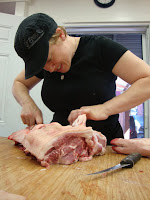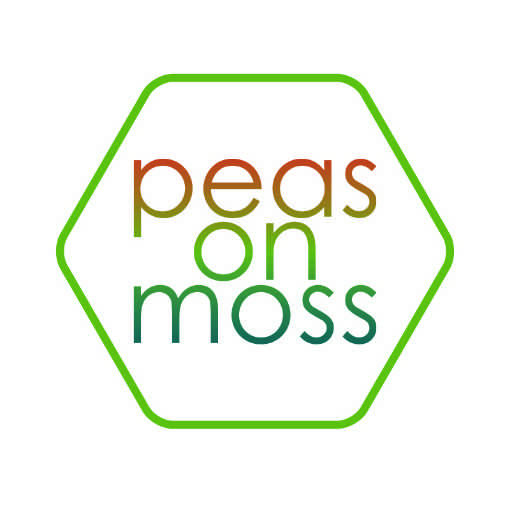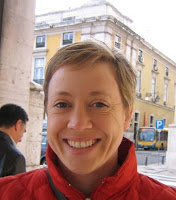 |
| Picture courtesy of Chef Sarah |
She explained, “Cafe Flora was by far the restaurant that opened my eyes and won my heart.” From working at Cafe Flora, she developed a real sense of respect for the food and for utilizing every part of the food – whether that was a plant or an animal. The experience as the sous chef at Cafe Flora prompted her to pursue a career as a culinary professional. She originally moved back to Hawaii to save money for culinary school but went to Las Vegas and worked as a personal chef for four years instead. Finally, her path moved her back to the Northwest and eventually Seattle.
Using her education background and culinary experiences, Chef Sarah is responsible for various classes at SCA, including Dining Room Service, Cost Control & Purchasing, Introduction to Wine, Functions of Management, and Advanced Culinary Practices, according to the SCA website.
 In addition to teaching, she has begun specializing in European seam style butchery. She described it as being focused on “fabricating cuts to their lowest common denominator while saving as much as you can.(Primal–> Subprimal –>Small Muscle) By maintaining sinew and silverskin you reduce the risk of spoilage and waste (and improve your food cost too).”
In addition to teaching, she has begun specializing in European seam style butchery. She described it as being focused on “fabricating cuts to their lowest common denominator while saving as much as you can.(Primal–> Subprimal –>Small Muscle) By maintaining sinew and silverskin you reduce the risk of spoilage and waste (and improve your food cost too).” In November, Chef Sarah will be heading to Kate Hill’s Camont farm in Gascony, France. Kate Hill is a recognized culinary expert in Gascon and French food, and she hosts cooking schools throughout the year to give participants hands-on knowledge about traditional French cooking. The particular course Chef Sarah is taking provides an in-depth study of French butchery. She’ll be there for two weeks, and I’m so envious. I can’t wait to hear about the things she will learn!
In November, Chef Sarah will be heading to Kate Hill’s Camont farm in Gascony, France. Kate Hill is a recognized culinary expert in Gascon and French food, and she hosts cooking schools throughout the year to give participants hands-on knowledge about traditional French cooking. The particular course Chef Sarah is taking provides an in-depth study of French butchery. She’ll be there for two weeks, and I’m so envious. I can’t wait to hear about the things she will learn!Chef Sarah is an energetic chef instructor whose passion in education and food draws students into the culinary world.



Recent Comments